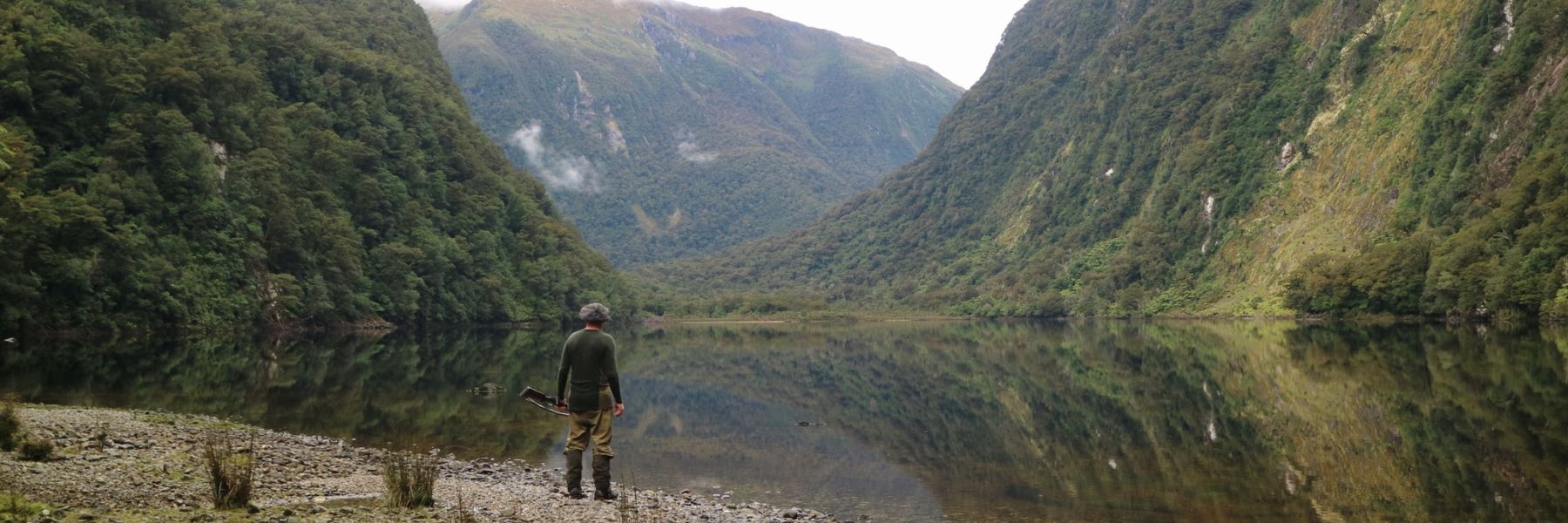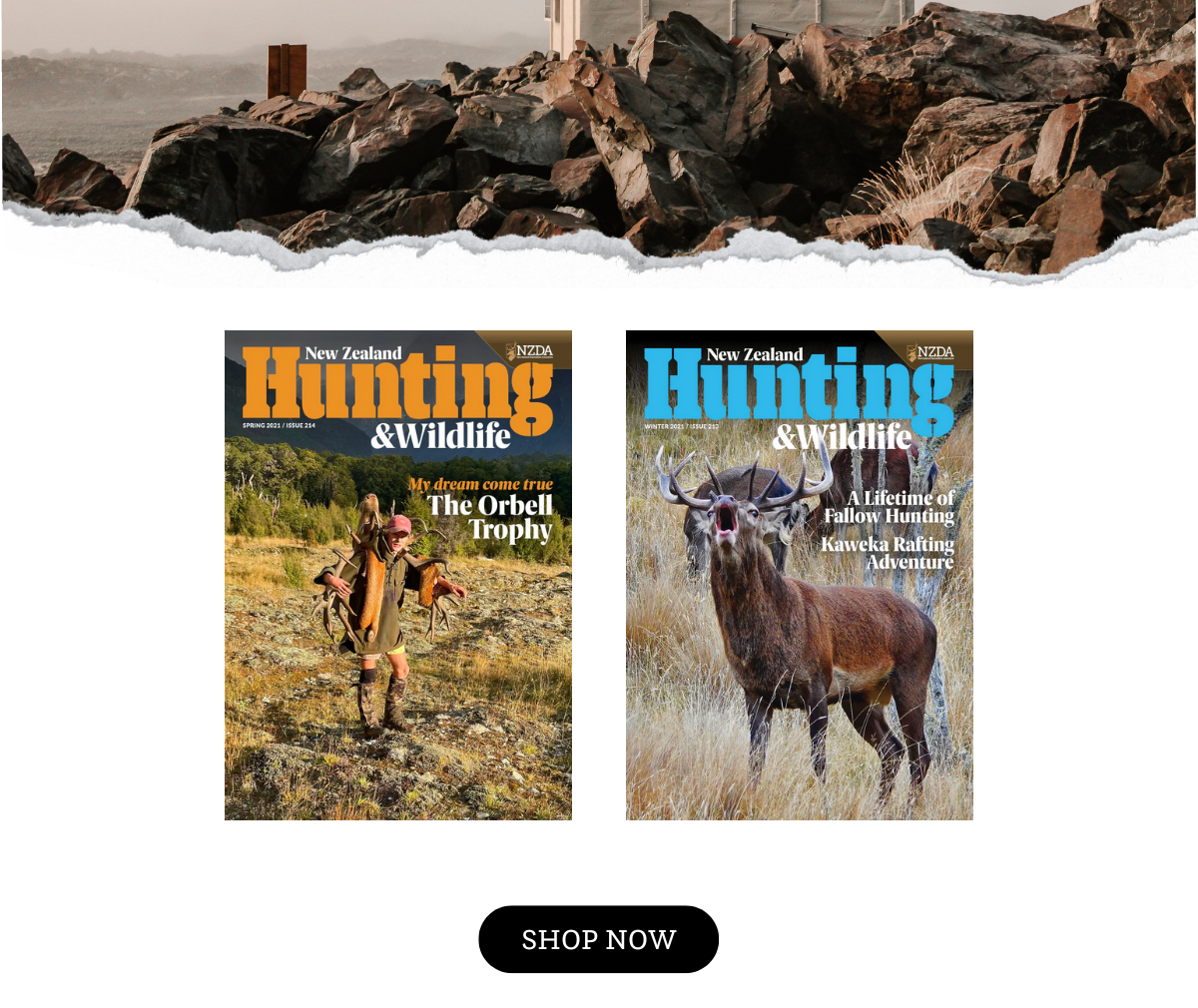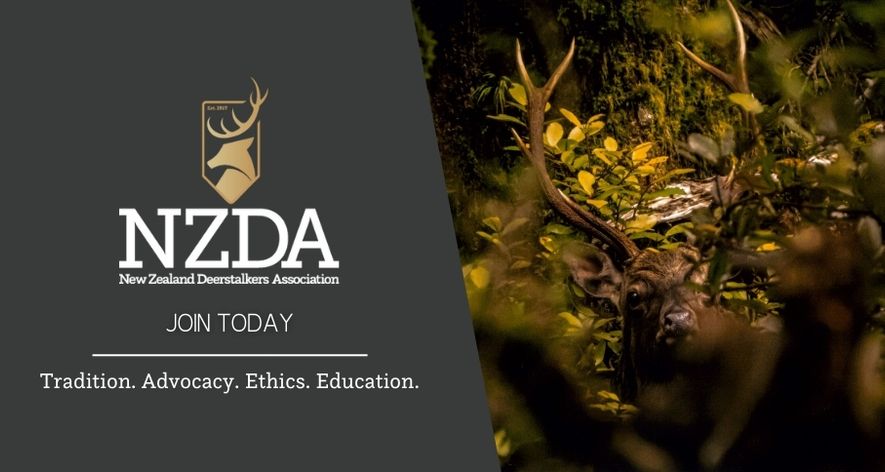28 August 2023
Hunting and Wildlife Magazine - Winter Issue 221
Words By: Tim Watson
Easter, April 1923 stands as a significant time in New Zealand hunting history. The annals of Wapiti hunting in our country were opened by keen Wairarapa hunter Vivian Donald and his legendary guide Leslie Murrell.
Vivian had been granted the first licence to hunt Wapiti since they were introduced into George Sound in 1905 and was to hunt the Lake Katherine area of the Sound.
He had engaged the services of experienced guide Murrell, who was well set up to guide in Fiordland being local and owning a 30-foot motor launch.
Together they left Manapouri, crossing Murrell’s Track on foot to Deep Cove in Smith’s Sound (now Doubtful Sound) then picking up the launch and cruising through Doubtful and Thompson sounds until they gained the open sea to finally access George Sound, reaching their chosen berth around 4pm. They established camp before nightfall and enjoyed a supper of boiled blue cod before turning in.
Donald must have been thrilled to finally be on the hunting grounds for a trip that would have involved serious planning, significant funds and primitive transport. Today’s deerstalker could be in Fiordland in a day whereas just getting to Manapouri from the Wairarapa would have taken a week in Vivian’s era.
Setting off at daylight for Lake Katherine, they immediately encountered good sign and the realisation of being on the first legal hunt for Wapiti began to dawn on Vivian.
Battling their way through the dense Fiordland bush, they reached the seaward end of the lake around 10am and to their excitement, through their telescope they sighted a great bull at the lake head. Fooled by the favourable look of the lakeside bush, they started to close the gap but were bluffed on several occasions, even climbing down from a treetop to reach the bottom of one sheer cliff.
After the best part of two hours battling the terrain, they decided to take a long shot (estimated to be over 300 yards) for fear of spooking the bull, and this is where the .280 Ross rifle was to prove its worth:
“It was here that I blessed the .280 Ross rifle which has a very high velocity and is dead-in up to 400 yards and would not be affected by the breeze which was blowing up the lake. Our luck was in, the first shot was effective, and we shook hands on the first bull Wapiti. He proved to be a fine well grown bull with 14 points, length 54 inches, spread 47, and weight 34lbs.”
Unlike today where new rifles and calibres are often released in an attempt to capture the market, the rate of progress was a bit slower in Donald’s time. However, for people of means and wealth (Donald’s family business was wool press manufacturing in a country focused on sheep farming) there were choices beyond the humble, sporterised .303 Lee Enfield.
Commercial European Mauser rifles from high-end English gun makers and various American rifles were available. Being a keen sportsman, Donald was obviously abreast of the latest rifles and cartridges.
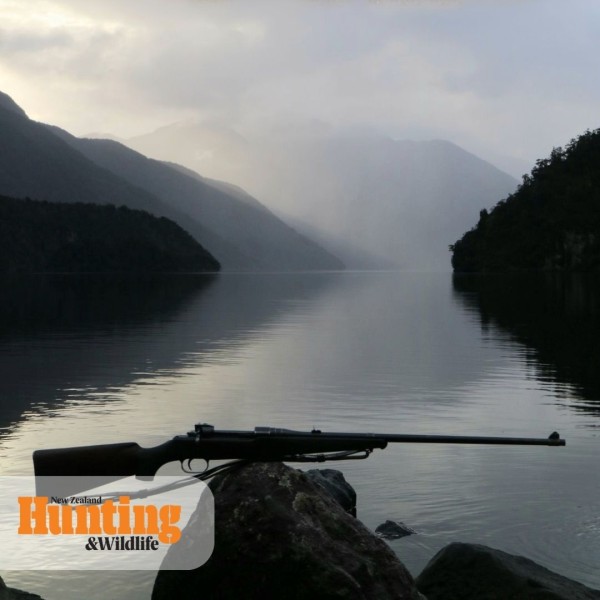
Donald’s .280 Ross returns to George Sound after 100 years.
Despite its dismal performance in the trenches of WW1 where the design could not handle the mud (not to mention injuring the operator if the straight-pull bolt was incorrectly assembled) the Ross stayed popular as a sporting rifle, winning the prestigious Bisley long-range shooting competition. That, combined with the .280 Ross round (which mirrors 7mm Rem Mag performance) offering reasonable sized projectiles travelling at speeds far in excess of most calibres at the time. With dial-up riflescopes and rangefinders unavailable back then, the advantage of having a flat shooting rifle with very little drop out to 400 yards meant you didn’t have to be an expert at precisely ranging distances. Quite an advantage in 1923.
Now this where the story starts to get interesting. At a 2013 auction, our family bought the .280 used by Vivian to down the Wapiti, accompanied by the 1963 police registration record showing him and his son Val (long-time NZDA member and editor of NZ Outdoor magazine) as owners.
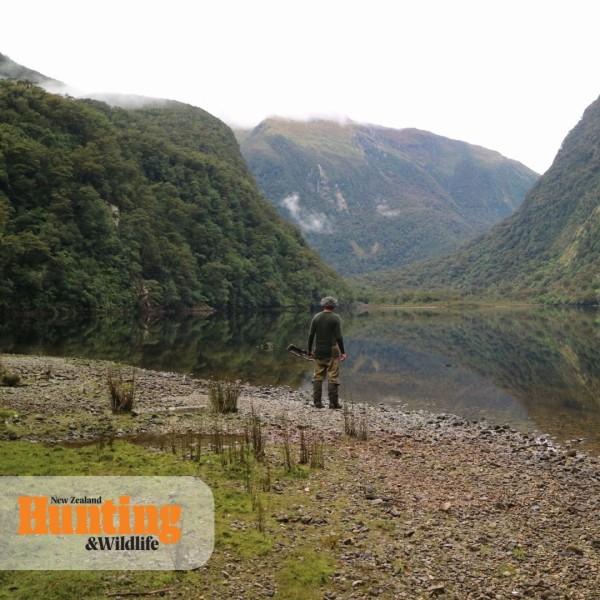
Steve, at the bottom of Lake Katherine, looks towards the head of the lake where the mighty bull was first sighted.
Past NZDA president Ian Wright wrote to the auctioneer adding further information related to him by Val about how his father had obtained the rifle: “Vivian had written to Sir Charles Ross to order a rifle and there was a very long delay in the reply. Eventually Vivian received a cable from Ross apologising and an explanation that he had been in Africa on safari.
Ross further explained that there was insufficient time for him to build a rifle to the specification Vivian had sent him by the date required, but that he could send him the rifle Ross himself had used in Africa which was the same specification and had very little use. Vivian asked for that rifle to be sent and this was the rifle used in Fiordland to shoot the first Wapiti.”
After we acquired the rifle, we visited Ian who told us the tale first hand and became our guide for a fantastic tour of the various collections of mounted trophy heads in the Wairarapa, including Vivian’s bull which hangs in the Masterton Club.
The eccentric inventor
Sir Charles Ross was an interesting character. The proud Scotsman was a talented inventor, soldier, and prolific entrepreneur. By age 11 he had inherited ownership of the largest tract of land in Britain and later sued his own mother for misappropriating his estate’s revenues! Later, he tried to dodge paying tax to the British government by claiming his estate was part of an American business concern - of course this did not pan out and he fled his native shores, dying in Florida in 1942. He was best known for his rifle designs and convincing the Canadian army to enter WW1 using his rifle as their frontline infantry weapon.
Ross was indeed on Safari in 1921, eventually leasing the famed Ngorongoro Crater, two years before Donald’s epic Wapiti hunt. This supports the story related to Ian Wright. Also supporting is the lack of a serial number. Having owned and examined other Ross M10’s, including legendary deerstalker Archie Kitto’s .280 Ross (held by the NZDA National Heritage Trust) I can confirm that many of the proof testing marks and serial number is missing on Vivian’s rifle, indicating that Sir Charles may have simply pulled a rifle off his assembly line and did not bother with testing or serialising used to track rifles shipped to buyers/vendors.
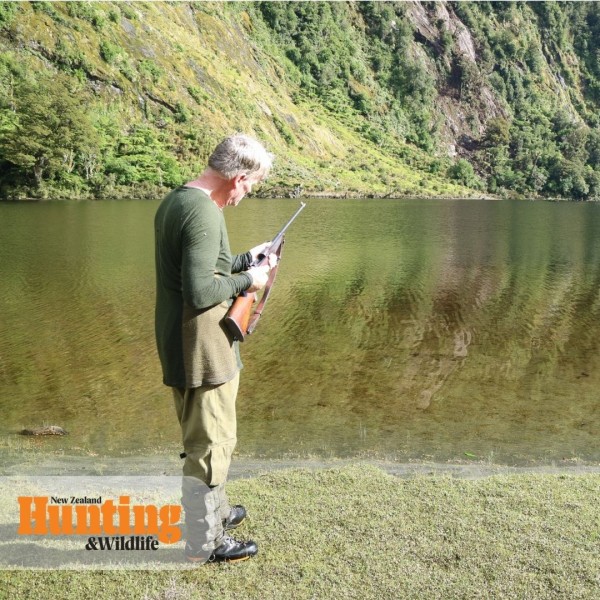
Steve stands where Donald’s great bull fell 100 years ago to the day, while looking back to where the shot was taken.
So, this rifle probably had quite an interesting life before it got to Vivian – on Safari in Tanganyika at the height of colonialism, with Sir Charles sweeping up ex-German farms in the wake of WW1 while romancing American socialite Emily K Hoffman and hunting all those fantastic African game animals.
The .280 Ross today
Donald’s rifle looks well-travelled with more than a few dings, a repair to the stock toe and some deep bruising to the left fore-end. The stock is well aged with a lot of the fine grain weathered out of the surface, but the rifle has a light well-balanced feel to it, which the slim stock wood contributes to. The sights consist of a simple blade and bead for shots out to 300 yards, while there’s a nifty pop-up peep sight on the rear receiver for long range work, likely what Donald used for taking that first Wapiti at over 300 yards.
There is no bad pitting to the exterior metal or the bolt face, but little bluing remains. The barrel is 26” long - for burning up all that powder. Looking down the bore it is obvious each owner has taken good care of her, with strong bright rifling remaining. Naturally, we were keen to see what she could do, so we sourced some components and dies and got to work with some loadings. We got 160gr Woodleighs to 2720fps at conservative pressures. The iron sights are still perfectly zeroed in.
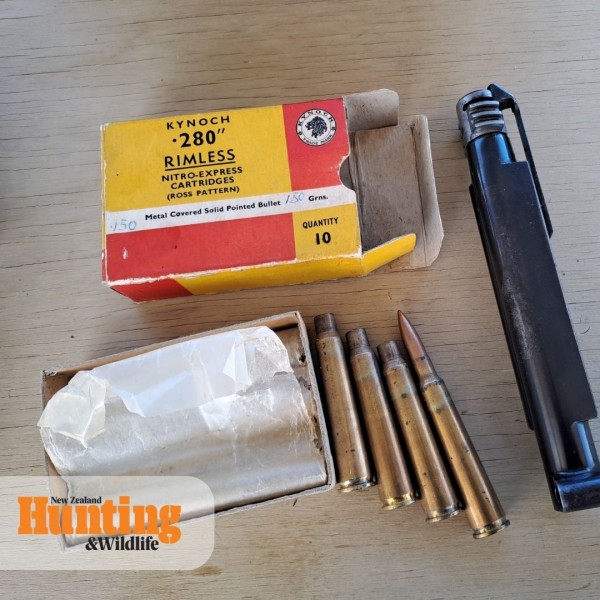
Original Kynoch .280 Ross ammunition and Donald’s .280 rifles straight pull bolt.
A historic anniversary
With an eye on history my dad Steve and I were aware that the 100-year anniversary of Donald’s hunt was coming up in 2023, so we planned to head into Fiordland and re-enact the hunt to Lake Katherine to the day with Viv’s rifle. Working with the block ballot holder (thanks Daniel) who kindly let us access the Lake on April 10-12th, we flew in for a couple of memorable days at George Sound hut.
Walking in the footsteps of Donald and his guide Murrell was very special and we got to experience some of what they encountered-
From the George Sound sandflies… tramping up through the wet forest… the treacherous rocks of Katherine Creek… the first view of the lake where they sighted the Bull… grovelling around the lake cliffs… where they likely took the shot… to standing on the shore where the great bull fell 100 years ago…
It was a trip of a lifetime and something that had to be done as owners of such an important artefact of NZ hunting history.
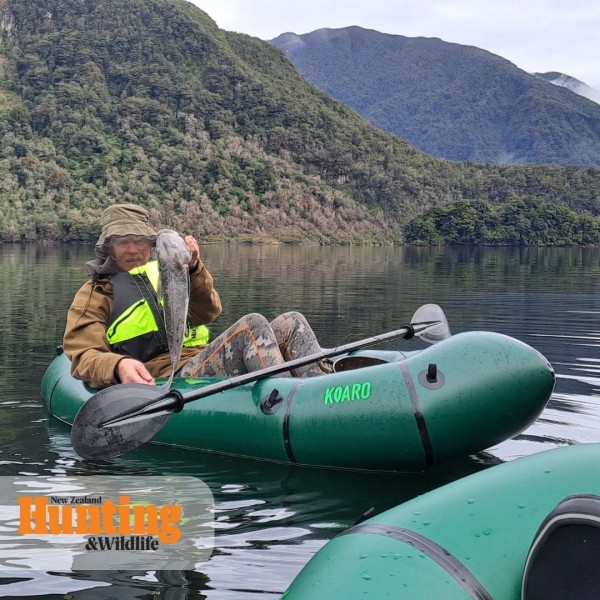
Tim and Steve even re-enacted Vivian’s pre-hunt dinner - blue cod on the menu.

